Leading the Way: Project Leadership for Today's Dynamic Environment
Project leadership requires flexibility, transparency, and empowerment. This article explores contemporary approaches to effectively motivate teams, develop talent, and drive results through purpose-driven vision and open communication.
Iyanna Trimmingham
9/23/20234 min read


Leadership plays a critical role in the success of any project. As the pace of change accelerates, project leaders today encounter new challenges that demand contemporary leadership approaches. This is particularly true for project managers in small businesses, who frequently juggle multiple roles amid resource constraints. By embracing adaptive leadership styles that align with current workplace trends, project leaders can effectively motivate and support their teams throughout the project lifecycle.
Fostering a Shared Vision
In project management, having a clear and inspiring vision provides direction and purpose. As a leader, effectively communicating the vision to your team is crucial for alignment. Host workshops, brainstorming sessions, or focus groups to co-create a shared vision. Gain buy-in by encouraging discussion about the "why." Explain how the project fits into the bigger strategic picture. This gives teams a purpose beyond just completing assigned tasks.
Regularly reinforce the vision so that it remains top of mind. Share project updates, milestones, and successes tied back to the vision. This keeps the team engaged, energized, and focused.
Developing Your Team
Investing in team development pays dividends through increased skills, capabilities, and motivation. Look for opportunities to mentor and coach team members to improve their weak areas. Recognize development wins and growth along the way.
Foster collaboration among team members. Pair up strengths, conduct cross-training sessions, or establish mentor relationships between experienced and new hires. This builds a supportive team culture.
Make time for "lessons learned" workshops throughout and after projects. Reflect on what went well or wrong, and capture best practices. This continuous improvement mindset strengthens abilities.
Leading by Example


Actions speak louder than words. The best leaders exemplify the behaviors they want the team to demonstrate. Model a strong work ethic, positivity, integrity, and professionalism. Hold yourself accountable first before expecting it from others.
Demonstrate the agility required in project management. Be comfortable with uncertainty and quick to respond to arising issues. Show the team that it's okay to pivot strategies if circumstances change.
Promote transparency in communication and decision-making. Be clear on project constraints, timelines, and expectations. Involve team members in key decisions to build trust.
Empowering Your Team
Enable team members to take ownership and drive results by providing autonomy balanced with support. Outline the goals and parameters, but allow flexibility in how they accomplish tasks. Check in regularly, but resist directing every detail.
Position your team as trusted advisors. Consult them when issues arise to tap into their expertise and ideas. Implement feedback mechanisms to give them an active role in project improvements.
Publicly recognize a job well done. Highlight examples where team members went above and beyond. Reinforce the link between their performance and project success. This motivates autonomy and initiative.
Promoting Open Communication
Clear, frequent communication minimizes misunderstandings and keeps projects on track. Maintain an open-door policy. Set recurring touch bases, but also be accessible outside meetings. Respond promptly to emails, calls, or messages.
Listen actively in conversations instead of defaulting to top-down communication. Engage in discussions by asking thoughtful questions. Seek diverse perspectives from all team members.
Provide opportunities for informal collaboration, such as periodic team lunches or events. This facilitates relationship building and idea sharing in relaxed environments.
Give direct, constructive feedback often. Frame setbacks as learning opportunities, not criticism. Recognize achievements, both big and small. This positive reinforcement boosts engagement and morale.
Understanding Leadership Styles


Leadership isn't a one-size-fits-all concept. There are various leadership styles, each with its unique characteristics. In the project management arena, it's crucial to understand when and how to employ these styles.
Transformational Leadership: Transformational leaders inspire and motivate their teams to achieve exceptional results. They foster innovation and create an environment where team members feel valued and empowered. In a small business setting, this approach can be a game-changer, driving creativity and out-of-the-box thinking.
Servant Leadership: Servant leaders prioritize the needs of their team members above all else. They focus on providing support, removing obstacles, and enabling their team to excel. This approach is particularly beneficial in small businesses, where close-knit teams rely on strong collaboration.
Situational Leadership: In today's dynamic project environments, situational leadership shines. It involves adapting your leadership style based on the specific situation and the readiness of your team members. Small businesses often encounter rapidly changing circumstances, making situational leadership invaluable.
Adapting Leadership Styles
The most effective project leaders adapt their approach based on the team and the situation. Assess when to provide more direction versus empowerment, collaboration versus independent work.
For newer teams, take a more hands-on approach. Maintain visibility, set detailed processes, and check work frequently. As the team becomes more experienced, transition to guiding from afar, trusting in their capabilities.
Adjust based on team skill sets. Coach struggling team members while giving more independence to strong performers. Vary your tactics to meet diverse needs.
Be flexible as circumstances shift, such as changes in timelines or resource constraints. Balance reactive management with proactive leadership for stability through turbulence.


Conclusion
Leading projects today requires balancing strategic thinking with empathy, while simultaneously developing your team and empowering them to take charge. By adopting a modern leadership mindset that aligns with the realities of today's project environment, you position your team for success. Through vision setting, transparent communication, and distributed leadership, project managers can cultivate cultures of engagement, and continuous learning. Your team will then drive the project to success and eagerly follow you into the future.
To be an effective project leader, focus first on empowering your people. Tangible business deliverables will naturally follow. Inspire your team through purpose, nurture their growth through mentoring, and encourage the expression of their talents through trust. With leadership that blends strategy with humanity, project managers can excel in guiding their teams through complexity and change. The future of project management begins with you modeling the kind of wise, compassionate, and empowering leader your team needs today.
Lead the way!

